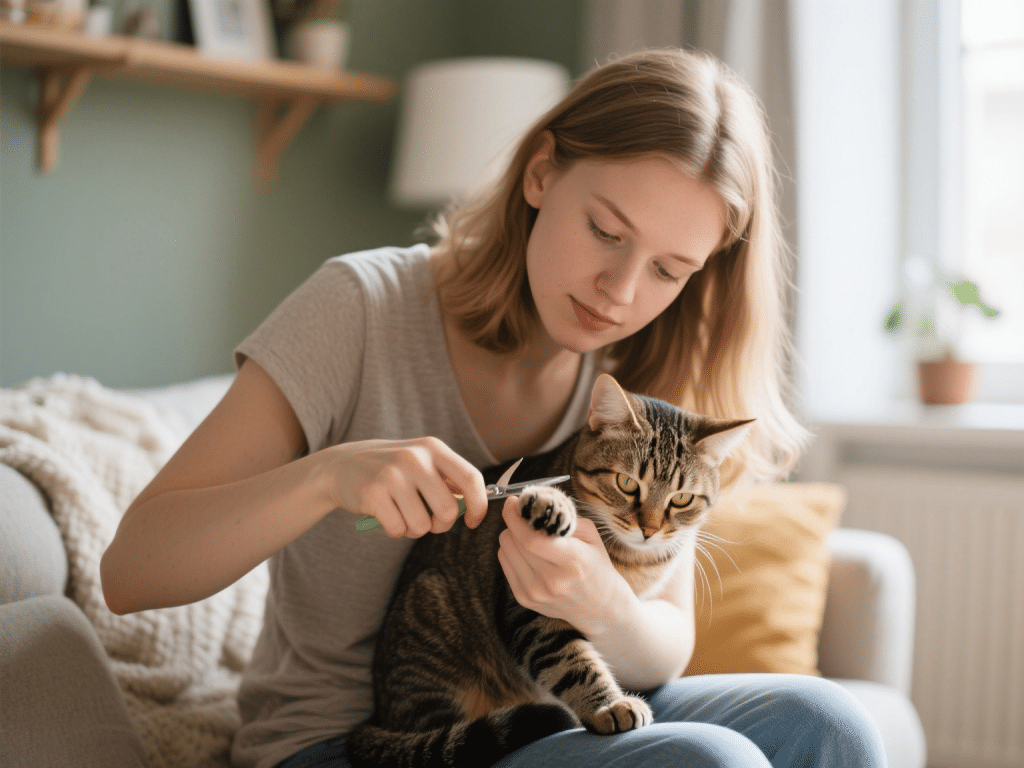
Introduction
Regular cat claw maintenance is vital to prevent overgrowth, reduce furniture damage, and minimize the risk of ingrown nails. Many cats find nail trimming stressful or frightening. This guide details step-by-step methods to trim claws calmly, making the experience positive for both cat and owner.
1. Gathering Supplies
Cat-Specific Nail Clippers: Use scissor-style or guillotine-style clippers designed for cats—these provide precision and reduced crushing force.
Styptic Powder: For immediate use if you accidentally clip the quick (the pink inner portion of the nail).
Treats and Rewards: Soft, high-value treats to reward cooperation.
Towel or Blanket: For swaddling nervous cats or providing a secure surface.
Good Lighting: Ensures you can clearly see the quick and avoid cutting too deeply.
2. Preparing Your Cat and Environment
Choose a Calm Moment: Trim nails when your cat is relaxed—after play or a nap. Avoid starting if the cat is already agitated.
Acclimate to Handling: Gently massage paws during regular petting sessions. Gradually increase the pressure on each toe to get your cat used to having its feet handled.
Create a Calm Space: Choose a quiet room with minimal distractions. Play soft music or use a pheromone diffuser (e.g., Feliway) to reduce anxiety.
3. Step-by-Step Trimming Process
Hold and Position:
Place your cat on a flat surface, such as a table or lap. If the cat resists, wrap it gently in a towel, leaving one paw exposed.
Extend the Claw:
Identify the Quick:
Clip at the Right Angle:
Reward Immediately:
4. Handling Accidents and Setbacks
5. Alternative Solutions
Soft Paws or Nail Caps: Vinyl caps glued onto nails can protect furniture without trimming. Replace every 4–6 weeks as nails grow.
Professional Grooming: If home trimming repeatedly fails, seek a veterinarian or groomer experienced in feline nail care.
Conclusion
With patience, gentle handling, and proper technique, trimming your cat’s claws can become a stress-free routine. Regular practice and positive reinforcement help your cat adapt, leading to healthy nails, reduced damage to household items, and a stronger bond between you and your feline companion.